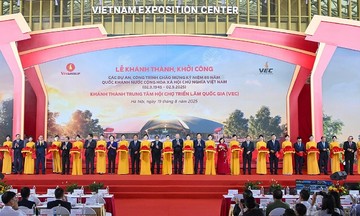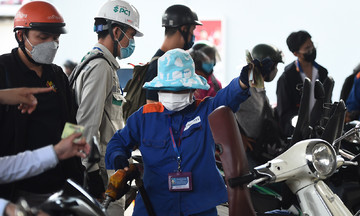At the national tax agency online conference on 1/7, the Tax Department (Ministry of Finance) announced decisions on organization and personnel to implement the industry's new organizational model.
According to the decision signed yesterday by the Ministry of Finance, the tax agency will transition from the current model of 20 regional tax sub-departments to 34 provincial/municipal tax departments (an increase of 14 units). Simultaneously, 350 district-level tax teams will be transformed into 350 grassroots tax offices under the provincial/municipal tax departments to manage tax collection at the commune level. At the central level, the Tax Department will still consist of 12 departments and equivalent units.
The new structure will be operational from 1/7, aligning with the two-tiered local government organizational model.
 |
Tax Department Director Mai Xuan Thanh speaks at the conference on 1/7. Photo: GDT |
Tax Department Director Mai Xuan Thanh speaks at the conference on 1/7. Photo: GDT
At the conference, the tax agency also announced the appointment of 34 heads of provincial/municipal tax departments.
The Tax Department stated that the consolidation of the tax system with 34 provincial/municipal tax departments and 350 grassroots tax offices is a significant milestone aimed at improving the quality and efficiency of tax agencies at all levels.
Director Mai Xuan Thanh pledged that the new structure will "operate smoothly and stably, serving the people and businesses in the best way". He urged the entire tax sector to immediately start working, engage with local areas, and advise provincial/municipal authorities for effective coordination.
Previously, from 1/3, the General Department of Taxation (Ministry of Finance) was transformed into the Tax Department, operating under a three-tiered model, including 12 departments and equivalent units at the central level, 20 regional tax sub-departments, and 350 district-level tax teams.
However, according to the Ministry of Finance, the regional tax sub-department model encountered several operational and personnel management challenges. For example, after the arrangement by regional or inter-district areas, many officials had to travel hundreds of kilometers to work, and the workload of the regional tax agencies increased three to four times. Meanwhile, the wide management area caused difficulties in operations.
In fact, after implementing the new organizational structure, about 4,500 people in tax agencies at all levels applied for voluntary redundancy under Decree 178, equivalent to over 10% of the sector's payroll. Cao Bang, Bac Kan, Yen Bai, Lao Cai, and Dien Bien are among the areas with the number of tax officials applying for redundancy exceeding 30%.
Phuong Dung












